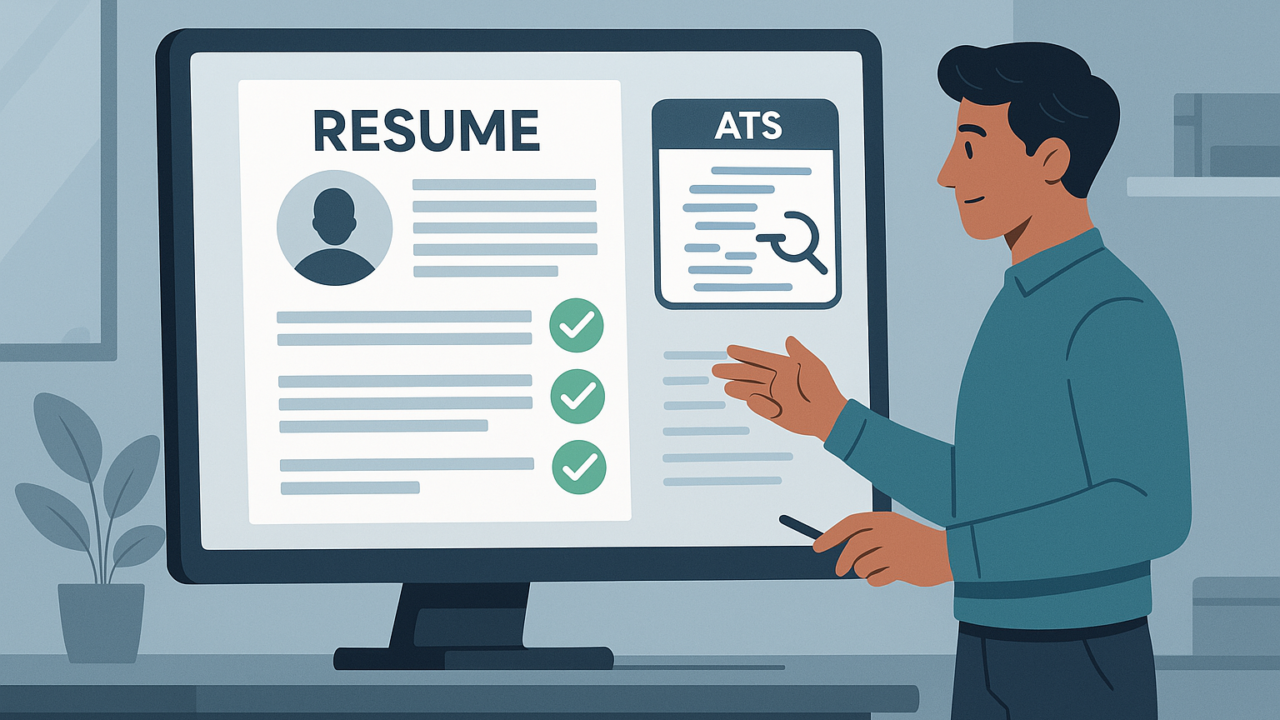In today’s job market, submitting your resume online is standard practice. However, many job seekers are unaware that before a hiring manager even sees their application, it often passes through an Applicant Tracking System (ATS)—a digital gatekeeper that filters resumes based on relevance. If your resume isn’t ATS-friendly, it may never reach human eyes.
This guide will help you optimize your resume for ATS screening, ensuring it passes the initial filter and increases your chances of landing an interview.
1. Understand How ATS Works
An Applicant Tracking System scans resumes for keywords, formatting, and relevance based on the job description. Resumes that don’t meet the system’s criteria get automatically rejected, while well-optimized resumes get forwarded to recruiters.
💡 Tip: ATS primarily searches for matching keywords and structured formatting to assess suitability.
🚨 Mistake to Avoid: Overloading your resume with graphics, tables, or fancy fonts—ATS may not recognize them and could discard your application.
2. Use an ATS-Friendly Resume Format
ATS prefers simple, structured resumes that are easy to read.
✅ Best Formats for ATS:
- Reverse Chronological Resume (Lists your work experience from most recent to oldest)
- Hybrid/Combination Resume (Balances experience and skills while keeping structure clear)
❌ Avoid: Functional resumes that focus only on skills without clear work experience timelines—ATS struggles to interpret them.
3. Incorporate the Right Keywords
ATS scans for keywords that match the job description. If your resume doesn’t include the right terms, it may get filtered out.
🔍 How to Find the Right Keywords:
- Look at the job description and identify repeated words or phrases.
- Use industry-specific skills and certifications commonly required.
- Include synonyms (e.g., “SEO” and “Search Engine Optimization”) to increase matches.
💡 Tip: Integrate keywords naturally throughout your resume (Skills, Experience, and Summary sections).
🚨 Mistake to Avoid: Stuffing too many keywords in an unnatural way—this can make your resume sound robotic and fail human review.
4. Optimize Resume Sections for ATS
Header Section
✅ Include: Your full name, phone number, email, LinkedIn URL
❌ Avoid: Images, icons, or fancy formatting—ATS may not recognize them.
Professional Summary
✅ A concise 2-3 sentence summary of your experience and skills.
❌ Avoid: Generic statements that don’t contain job-specific keywords.
Work Experience
✅ Clearly list Job Title, Company Name, Dates Worked, and Responsibilities.
✅ Use bullet points with action verbs to describe accomplishments.
❌ Avoid: Long paragraphs—ATS prefers clear, structured bullet points.
Skills Section
✅ List both hard skills and soft skills using keywords from the job description.
❌ Avoid: Overloading soft skills like “communication” without backing them up with achievements.
5. Keep Your Resume File ATS-Compatible
📌 Best File Format:
- PDF (if allowed by the job application)
- DOC or DOCX (for universal readability)
🚨 Mistake to Avoid: Submitting a resume in JPEG, PNG, or an uneditable PDF—ATS can’t scan images.
6. Test Your Resume for ATS Compatibility
✅ Run a self-test:
- Copy-paste your resume into a plain text editor (Notepad/WordPad)—if formatting gets lost, ATS may struggle to read it.
- Use online ATS resume scanners to check keyword match rates.
Conclusion
Your resume is your ticket to an interview, but if it’s not ATS-friendly, it may never get reviewed by a recruiter. By following these resume optimization techniques, you’ll improve your chances of getting past the digital gatekeeper and landing your dream job.
🔹 Take Action Today! Update your resume with ATS best practices and test its effectiveness before applying for jobs.




